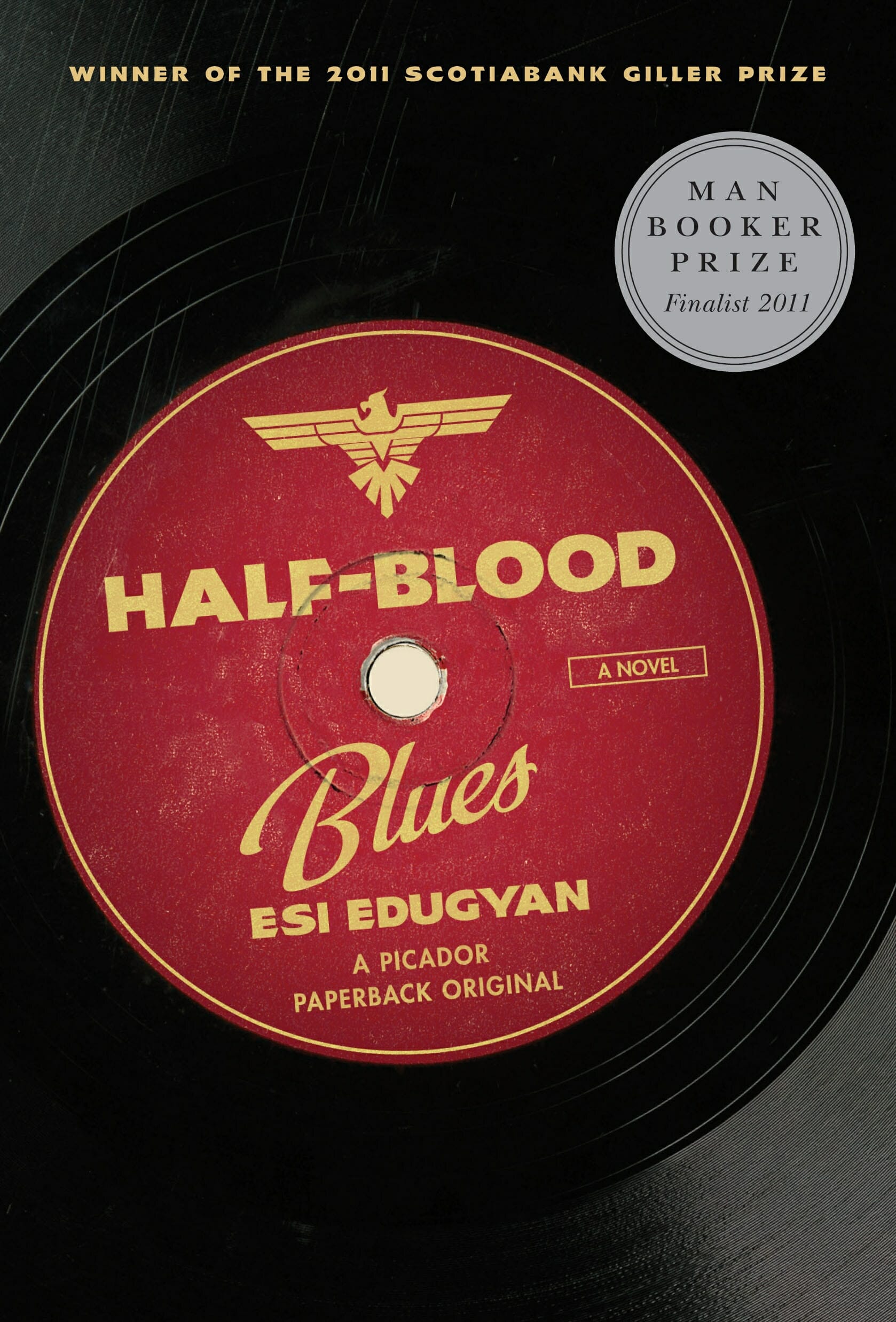Half-Blood Blues by Esi Edugyan
Lady sings the Half-Blood Blues

In Esi Edugyan’s novel Half-Blood Blues, the narrator’s inventive and free-flowing descriptions of jazz mimic the music itself. For readers unfamiliar with jazz or unimpressed by it, the explosion of color, verve, imagery and verbal idiosyncrasy in the book will in and of itself quicken the heartbeat and warm the insides. How not, with central character Hiero (Hieronymus) Falk delivering “note after shimmering note, like sunshine sliding all over the surface of a lake,” and with the great Louis Armstrong, “who could make his glissandi snap like marbles, the high Cs piercing,” joining him in an impromptu jam session?
Half-Blood Blues gives us an improbable but gripping tale, narrated by bassist Sid Griffiths of the Hot-Time Swingers, a German and African-American jazz band in Nazi Germany and later in France. “Think about it,” muses Sid. “A bunch of German and American kids meeting up in Berlin and Paris between the wars to make all this wild, joyful music before the Nazis kick it to pieces? And the legend survives when a lone tin box is dug out of a damn wall in a flat once belonged to a Nazi? Man. If that ain’t a ghost story, I never heard one.”
Edugyan’s second novel (her first was The Second Life of Samuel Tyne) has been heralded by many as original both in subject matter and prose. This is largely true—though the commendations for her prose should be qualified. Her characters speak a jazz-influenced Baltimore argot particularly well-suited to repartee and the coining of aphorisms. That said, the rendition of their German-language conversations (Hiero doesn’t know English) in this same spontaneous and idiomatic style stretches credulity a bit.
The book proved to be a major success in the author’s native Canada, where it won the prestigious Scotiabank Giller Prize in 2011 and was a finalist for the Governor General’s Award. It made the short list for the Man Booker Prize as well as the Orange Prize in the U.K. and has garnered a host of positive reviews since its recent publication in the U.S. If it requires a major suspension of disbelief on the part of the reader—and if it doesn’t quite fully live up to all the trans-Atlantic hype surrounding it—Half-Blood Blues still emerges as substantive and entertaining.
We start in Nazi-occupied Paris, 1940, at a recording session by the Hot-Time Swingers, reduced in number since escaping Nazi Germany but still brimming with magic. Sid, the bassist, discreetly salvages one of several discs the Swingers record but then throw away at the insistence of Hiero, the dazzlingly talented trumpet player who is the crux of the band—and a perfectionist. The next morning, the Nazis snatch Hiero, who disappears.
Fast forward to Baltimore, 1992. Chip Jones, drummer of the (long since dissolved) Swingers, urges Sid to go back to Germany with him to attend a jazz festival named after Hiero. It turns out the disc Sid saved that long-ago night, with its single track, “Half-Blood Blues,” has made Hiero and his band world-famous.
Chip also floors Sid with a surprise—he has just received a letter from Hiero, alive and well in Poland. Hiero has asked that if his two old bandmates go to Germany for the festival, they proceed to Poland afterward to visit him. Sid does not quite believe Chip, but agrees to fly with him to Germany. The story alternates between Sid’s account of the trip and, in much longer chapters, his remembrances of life in Germany and France more than 50 years earlier.
At the festival, Chip and Sid view a documentary film. In it, Chip and others appear to blame Sid for Hiero’s capture (and presumed death) at the hands of the Nazis. The accusation is false—Chip acknowledges as much to a furious Sid afterward. But the truth of what happened those last days in Paris before Hiero’s capture and the band’s decision to pack it in and leave Europe is almost as explosive. Edugyan does not initially reveal that Sid remains haunted by a fateful decision he made. That comes into play at a later stage.
-

-

-

-

-

-

-

-

-

-

-

-

-

-

-

-

-

-

-

-

-

-

-

-

-

-

-

-

-

-

-

-

-

-

-

-

-

-

-

-








































